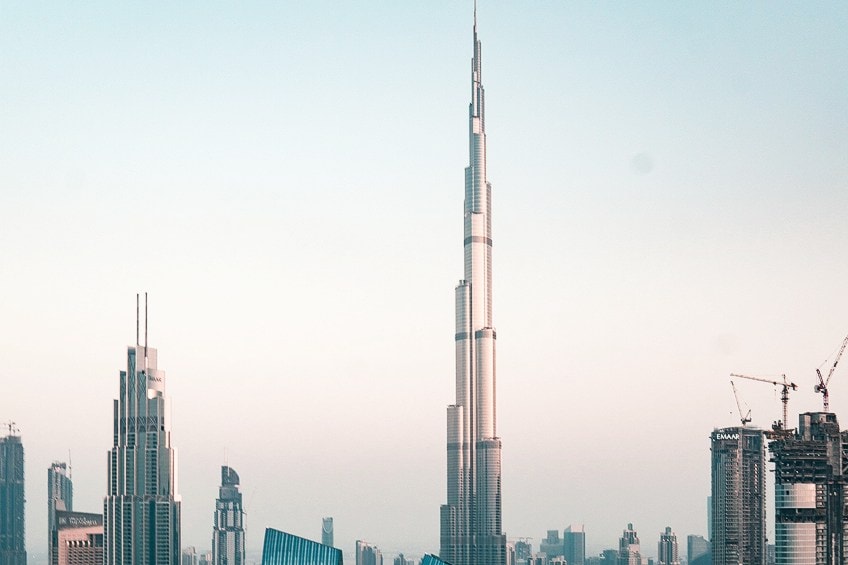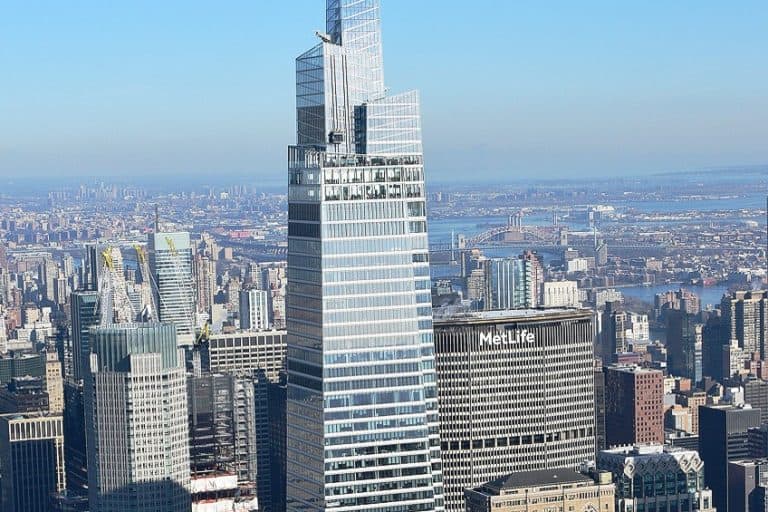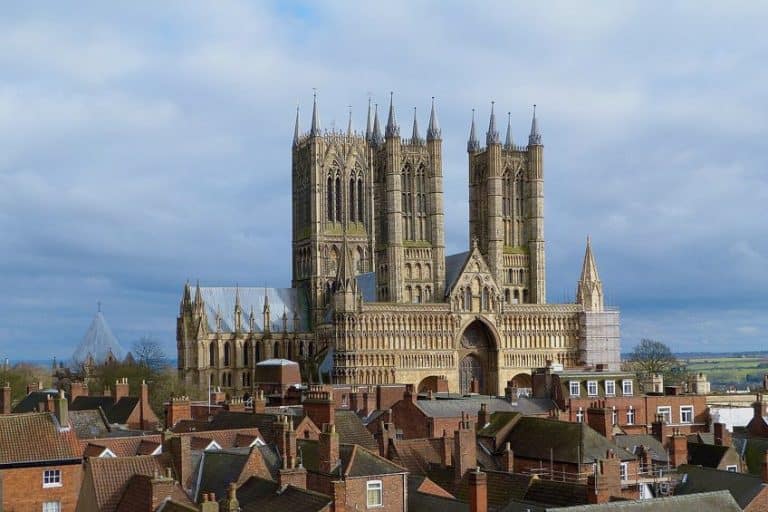Burj Khalifa – Looking at the World’s Tallest Building in Dubai
The world’s tallest building in Dubai is called the Burj Khalifa. It is seen as an exemplar of global cooperation, a symbol of advancement, and emblematic of the emerging and vibrant Middle East. Yet, exactly how long did it take to build the Burj Khalifa and when was the Burj Khalifa built? In this article, we will answer these questions by looking at Burj Kalifa’s architecture and Burj Khalifa’s purpose.
Table of Contents
The Burj Khalifa: The World’s Tallest Skyscraper
| Date Completed | 2009 |
| Architect | Adrian Smith (1944 – Present) |
| Height | 829 meters |
| Location | Dubai, United Emirates |
| Burj Khalifa’s Purpose | Mixed-use |
The Burj Khalifa provides proof that Dubai is no longer just a regional wonder, but also an internationally recognized city whose position in an ever-changing world is being constantly re-evaluated. In the last three decades, the city has seen phenomenal growth which has been the result of human ingenuity and talent.
Engineers, architects, and designers continue to create a Dubai based on their vision for a globally recognized Dubai, and Burj Khalifa is part of that vision.
For those who initiated the project, it was a desire to put Dubai on the map as a region whose people could set new standards, break new records, and achieve anything they sought to accomplish by working together.

Conception
Burj Khalifa is the incredible centerpiece of a massive development project which will upon completion include nine hotels, 19 residential buildings, a mall, a lake, and 30,000 houses. The Burj Khalifa’s purpose was apparently to steer the local economy away from being purely reliant on oil and more geared towards an economy that was tourism and service based.
The government believed that the structure would help the region gain more recognition internationally, and as a consequence, more investment.
At some point during the design phase, the early Emaar developers ran into financial issues and needed extra economic financing. The United Arab Emirates’ ruler, Sheikh Khalifa, provided financial assistance, causing the name change to “Burj Khalifa.” The strategy of profit gained from high-density structures and malls built around the skyscraper has proven to be effective. The project’s surrounding hotels, stores, and residences in Dubai’s downtown have earned the greatest income, while the Burj Khalifa itself has made little profit.
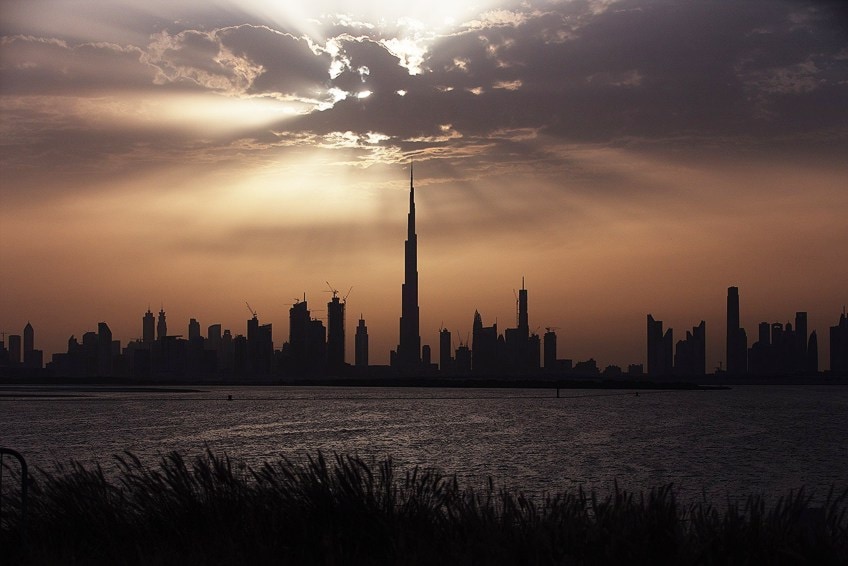
Construction
The Construction work on the project started in January 2004. 111,000 tons of concrete were used for the foundation. Cladding of the exterior started in May 2007 and it would take two years to complete. It would take around 380 technicians and engineers to execute the project. When they started installing the external panels, they were able to install around 20 panels every day, and towards the end of the project, they were up to 175 panels daily.
It was essential that the concrete used in the structure was highly consistent throughout.
It needed to be able to withstand the incredible temperatures of the desert as well as the force of thousands of tons. To avoid this, the concrete was not laid during the day. Rather, ice was included in the mixture during the summer season, and it was poured during nighttime when the air was colder and the humidity in the air was higher. Cold concrete cures more consistently, making it less prone to crack and set too soon.
Any big flaws may have ruined the entire project.
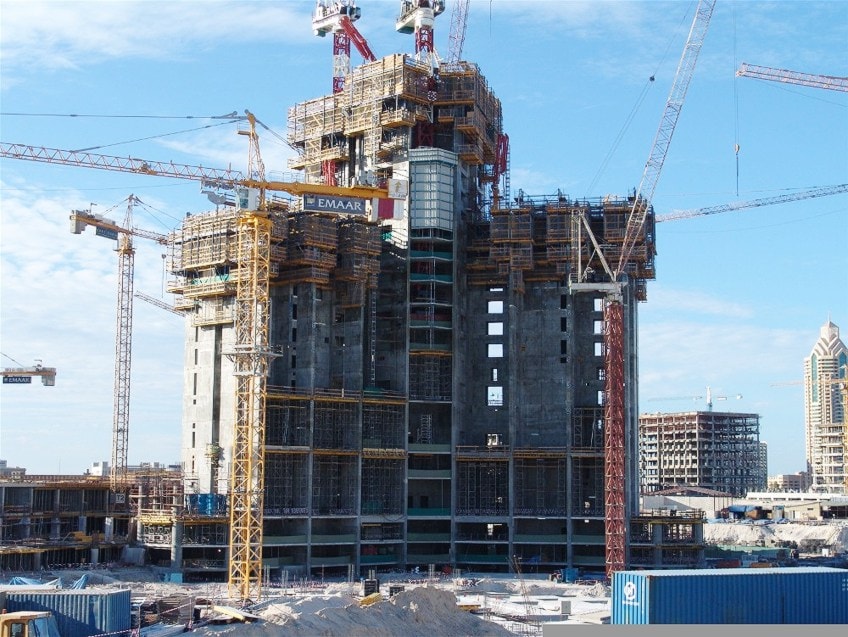
Burj Khalifa’s Architecture
Despite the Burj Khalifa’s height, it is the architecture that really makes the structure stand out on the Dubai skyline. Architects from across the globe were invited to send in their design ideas. Adrian Smith was awarded the honor of being Burj Khalifa’s builder after the design was subjected to various safety programs to test the structural integrity of the proposed structure.
The skyscraper is built using Fazlur Rahman Khan’s tubular system.
This is a highly effective design that only requires half the steel that was required in older structures such as the Empire State Building. Khan is highly revered in engineering and architectural circles as his techniques forever changed how we build tall structures. Burj Khalifa’s builder got the idea for the shape of the structure when he looked out of his office window and saw the curving three wings of Lake Point Tower and realized that it was the perfect design to use as a starting point for Burj Khalifa.
The architects revised the design many times so that the interior layout worked with the shape of the building. The structural design that they created for the building is called the buttressed core. Other aspects of the design are based on Islamic architecture, such as the spiraling minaret of Samarra’s Great Mosque.
As the skyscraper rises, a series of setbacks create a spiral appearance, with outdoor terraces conveniently placed on the roof of each floor as the cross-section of the building decreases the higher it goes.
The shape of the building is believed to have been inspired by the Hymenocallis flower. The building’s structure is composed of a central core, around which three separate wings are arranged. This Y-shaped modular design aids in providing the skyscraper with inherent stability as well as sufficient residential floor plates. A sculpted spire sits atop the central core at its apex.
Wind Tunnel Tests
In order to test the effect that winds could have on the structure, it was subjected to more than 40 wind tunnel tests. These tests ranged from effects that the climate of Dubai would have on the building, as well as how the design would stand up to winds in microclimates such as the terraces. To ensure that the correct safety precautions were in place through every step of the construction process, wind tests were even carried out with the cranes placed on the tower. Tests were also carried out to ensure that the building’s design took pressure and temperature changes at high altitudes into account.

What’s Inside the Burj Khalifa?
Several floors of the building contain the Armani Hotel, the only hotel in the world designed by the famous Giorgio Armani. The hotel reflects Armani’s special flair for pure luxury, simplicity, and stylish comfort, and is the realization of the designer’s vision of bringing his elegant style to life. There are several more floors above the hotel that are called the Armani residences, which feature the same exquisite attention to detail and feeling of sophistication as the hotel, except aimed at long-term residents.
Not all the residential spaces are curated by Armani though, and there are over 900 units that are privately owned.
On the 122nd floor of the building, one can find an area with a restaurant, dining room, and lounge, known as Atmosphere. As one can imagine, the view which accompanies your culinary experience is breathtaking, offering views of the Arabian Gulf and downtown Dubai. “At The Top” is the name of the floor that features one of the world’s highest observation decks which has an outdoor terrace.
The elevator that takes you to that level is the fastest double-deck elevator in the world, so just one visit allows you to experience several world-record-holding aspects of Burj Khalifa.
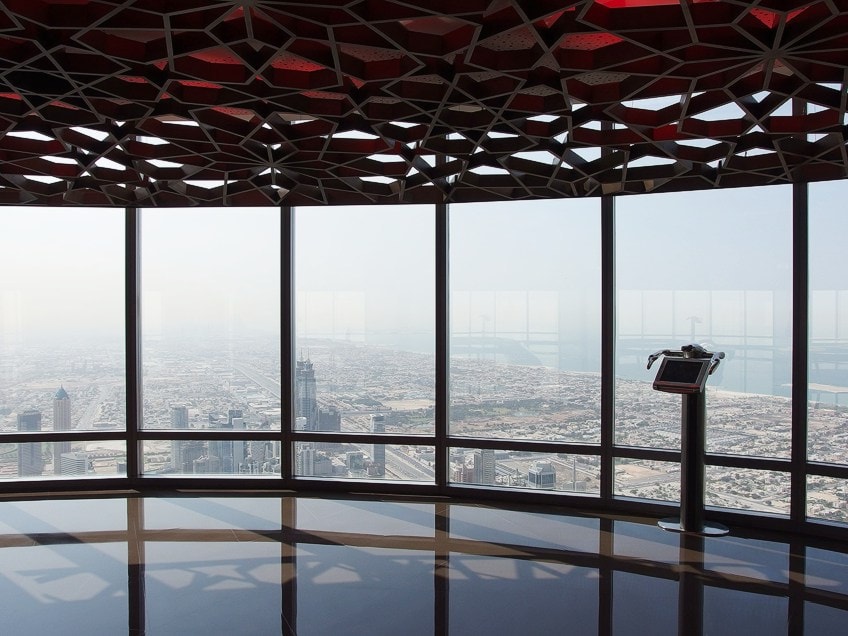
Once there, you can enjoy incredible 360-degree vistas of Dubai, or you can use one of the telescopes to check out the beautiful city in closer detail. There is also an augmented reality telescope that allows you to view the surroundings in real-time while the software overlays digital images, allowing you to experience the environment in different climates and seasons.
In 2010, tourists were stuck in the elevator between floors for 45 minutes following a power issue, resulting in a two-month closure of the deck to have it fixed.
Above the observation deck floor, there are the Corporate Suites which contain offices for the corporate high-flyers, with arguably the best views in the world for an office! Above the corporate offices is the “At the Top SKY Floor”. This floor is accessed by entering the elevators found in the lounge of the “At the Top” level, and then ascending to the SKY Level on the 125th floor, which contains the highest deck in the world!
On level 153, you can find The Lounge, the highest lounge in the world, a place where you can get teas, cocktails, and canapes.
Interior Design
The interior design of the Burj Khalifa was created by award-winning designer Nada Andric. It features Venetian stucco panels, silver travertine floors, and handmade tapestries, as well as stainless steel, glass, and polished dark stones.
The interior design was inspired by the culture of the region while also keeping in mind the building’s status as a globally recognized icon.
Artists from the Middle East and abroad were commissioned to create over 1,000 pieces of artworks that now adorn the walls of the building. The artworks were chosen that represented global harmony and the connection of communities and cultures across the world.

Outside Burj Khalifa
Another beautiful aspect of the tower is the parks and gardens that surround it. There is also a man-made lake and spaces where there are various events held regularly such as markets, concerts, exhibitions, and fashion events. The parks are perfect for picnicking and taking in the city views or cycling around the many paths.
The Dubai Mall is also just a small walk from the park, as well as other little retail spaces and restaurants.
Controversies
A year and a half after the building opened, a man in his 30s jumped to his death from the 147th floor, landing on the 10th floor’s deck. It was later confirmed to have been a suicide following an incident where the company he was working for in the building refused to grant him leave. Another person fell to their death after apparently jumping from the observation deck. She was a tourist from Portugal. Because most of the region’s locals prefer governmental jobs, the building was largely constructed by laborers from East and South Asia.
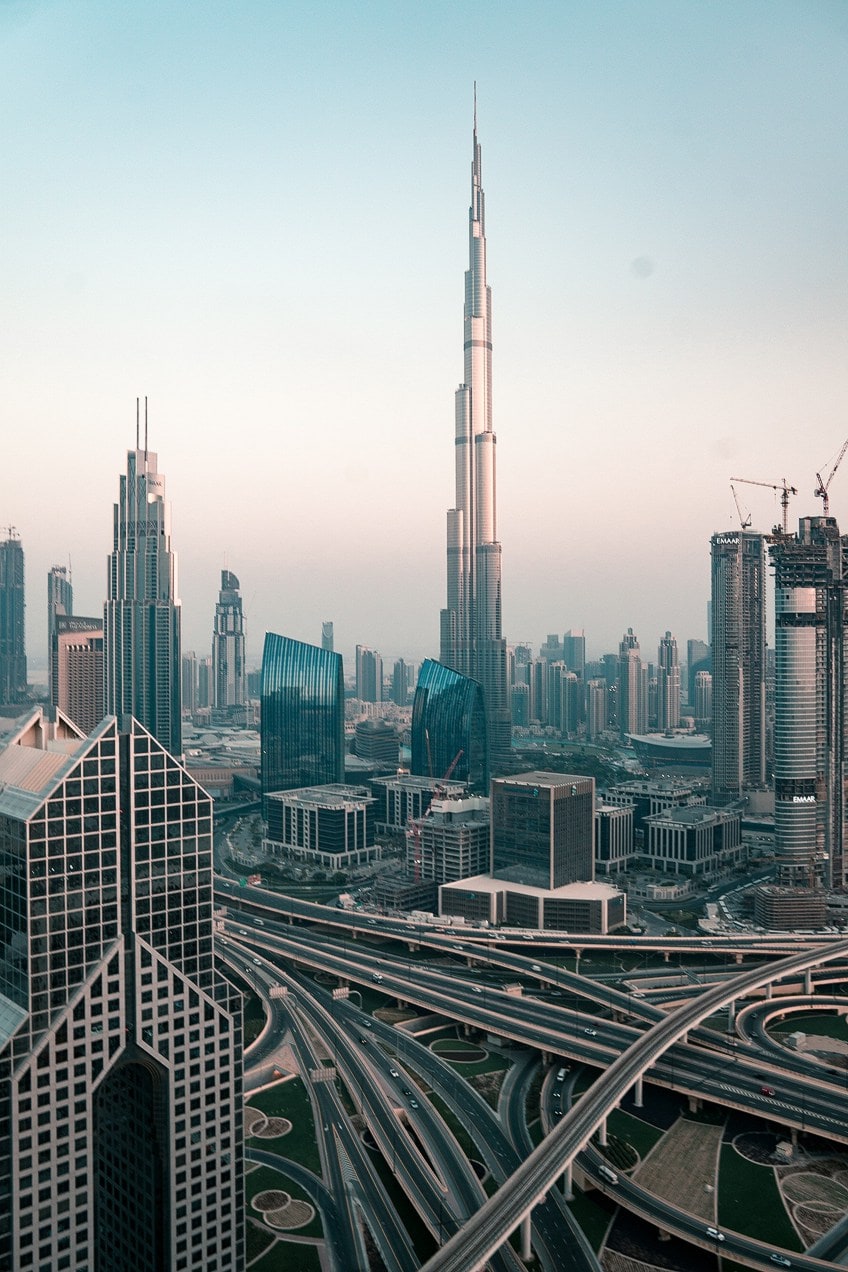
In 2008, there were around 7,500 laborers working on-site, and they were only earning around £3 per day for long hours and living in disgusting conditions. In 2006, there were massive riots when the buses meant to pick workers up after their shift had ended were continuously late. Around 2500 workers started to protest which eventually broke out into a riot, with £500,000 in damages reported after they destroyed construction equipment, offices, cars, and computers.
Although the workers returned the next day, they refused to work until a resolution had been reached.
Fun Facts About the Burj Khalifa
The Burj Khalif really is an incredible building that offers many activities for its visitors. It has also broken many records and is renowned for its achievements. Here are a few more fun facts to explore before you go.

It Is Huge
One of the most notable aspects of the Burj Khalifa is its cloud-piercing elevation. The Burj Khalifa soars above Dubai at an impressive 828 meters in height. It’s three times the height of the Eiffel Tower as well as approximately double the height of the Empire State Building.
If one were to try and lay them end to end, the building’s components would make it over a quarter of the way around the planet.
It Is Heavy
The weight of the building’s components is another one of the most impressive facts. To put it in perspective for you, the concrete weighs the same as 100,000 elephants. The weight of the aluminum required for the Burj Khalifa is equal to around five A380 planes.
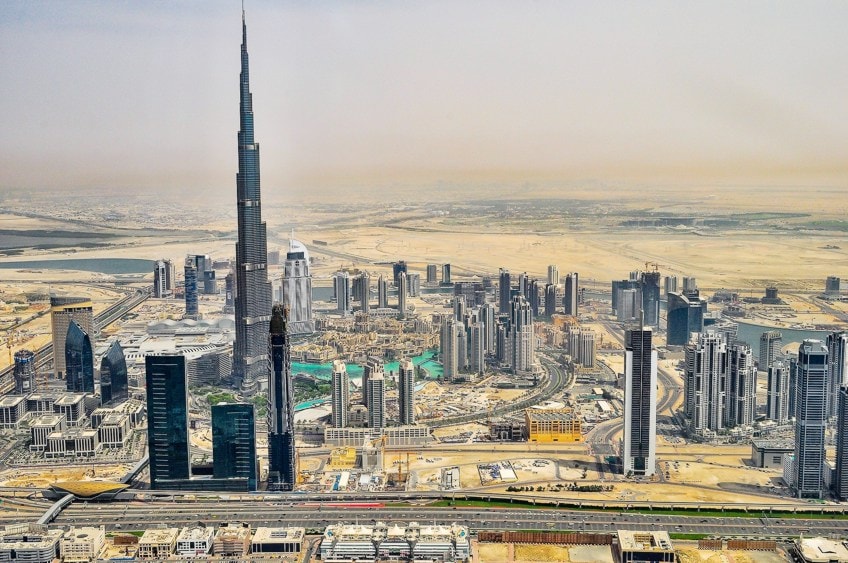
It Has Record-Breaking Elevators
The building also has the world’s longest elevator ride, which continues for 140 floors and is also among the fastest in the world with speeds of up to 10 meters every second! Another cool fact about the tower is that due to its height, its tip can be seen as far as 95 km away!
The tower was placed in a strategic manner that was rotated 120 degrees in order to minimize the intense windstorms that frequently sweep across the desert.
The piles of the building descend down from the podium and into the ground to a depth of 50 meters. The cladding system used in the building’s design was created to withstand the extremely high temperatures experienced in Dubai during the extremely hot summer months.
There Are Dedicated Sky Lobbies
Due to the sheer size of Burj Khalifa’s architecture, there are areas known as Sky Lobbies, which all contain their own facilities such as spas and gyms, as well as swimming pools, and rooms for conferences and events.
At one point in the design phase of the construction, engineers toyed with the idea of creating the world’s first triple-decker elevators, but eventually opted for the double-decked layout.
It Is Eco-Friendly
The Burj Khalifa is also lauded for its sustainable features and use of resources. More than 15 million gallons of water are collected annually by the building’s systems and reused around the structure for things like irrigation of the landscape, supplying the fountain with water, and for use in the cooling system. It is said that all the water that is collected from the building’s air conditioning system is enough to fill around 20 Olympic-sized pools.

A Man Climbed the Burj Khalifa in 2011
Alain Robert is known to the world as the French Spiderman, as he is famous for illegally climbing the facades of buildings to reach their apex. What is even crazier is that he uses no ropes and there is nothing to stop him if he falls. He obviously is not able to attain any sort of license to do this, so he arrives at dawn and starts to ascend when no one is looking.
However, in 2011, when he ascended Burj Khalifa, he used a harness and rope to meet the necessary safety requirements. He stated to the press that it was more likely for the reputation of the building than his own life.
The harness was tethered by a rope from more than 100 floors up. Climbing quickly and methodically, he chose a column in the center and avoided pipes that could potentially slow down his ascent. He was 48 years of age at the time of climbing the world’s tallest building is in Dubai, and he had climbed more than 70 skyscrapers before that.
The Burj Khalifa skyscraper, the world’s tallest building in Dubai was built to contain a range of commercial, residential, and hospitality enterprises, and topped off at a height of 828 meters upon completion. When the building was inaugurated at the beginning of 2010, it easily toppled the previous tallest skyscraper from its position at number one. The Taipei 101 building is only 508 meters compared to the Burj Khalifa’s height of 828 meters! Burj Khalifa has broken several records since its creation, including the highest observation deck, the fastest double-decked elevator, and many more. It will be many years before something is able to overtake the Burj Khalifa from its well-earned place.
Frequently Asked Questions
Where Is the World’s Tallest Building?
The world’s tallest building is in Dubai. Even though Dubai is in the desert, it has quickly transformed itself into a technological and architectural oasis, featuring cutting-edge designs and world-class technologies. Burj Khalifa’s architecture is an emblem of the changing face of the Middle East, and Dubai is the city leading that transformation in the region. The development of Burj Khalifa and buildings like it in the region is part of a continuous strategy by the government to try and move the local economy away from its reliance on oil to one driven by tourism and services.
When Was the Burj Khalifa Built?
The first excavation work of the foundations began at the start of 2004. It was officially opened on the 4th of January 2010. However, upon its opening, there were still certain sections of the building’s interior that had not been completed yet.
Around How Long Did It Take to Build the Burj Khalifa?
In total, it took six years to build the tower. The official opening ceremony was shown live on a big screen on Burj Park Island as well as on smaller screens throughout the city. Hundreds of news organizations from across the world covered the event live. Over 6,000 people attended the event. The celebration included a fireworks show, light projections displayed onto and around the skyscraper, and additional audio, lighting, and water features. The projections were designed by Speirs and Major Associates, a group of lighting specialists from the UK.
What Is the Burj Khalifa’s Purpose?
The Burj Khalifa is a mixed-use multi-purpose building that offers malls, offices, hotels, and residences. It also has SKY Lounges, an observation deck, pools, terraces, restaurants, and many other facilities. The main reason it was created was to draw international attention to the area. This was part of an ongoing effort by the government of Dubai to transform the once barren desert into a thriving metropolis. The early developers had financial difficulties and required additional funding at some stage during the planning phase. Sheikh Khalifa, the ruler of the United Arab Emirates, offered financial help, resulting in the name change of the building from the Dubai Tower to Burj Khalifa.
Who Produced the Burj Khalifa’s Interior Design?
An award-winning designer, Nada Andric created Burj Khalifa’s interior design. It contains silver travertine flooring, handmade tapestries, and polished black stones. The interior design was influenced by the region’s culture while also maintaining the building’s significance as an internationally known symbol in mind. Over 1,000 pieces of artwork created by artists from the Middle East and abroad currently decorate the walls of the structure. The artworks chosen symbolized worldwide peace and the global interconnection of communities and cultures.
Who Is the Burj Khalifa’s Builder?
The architect for the building was Adrian Smith. Adrian Smith is from America and is responsible for the design of several famous buildings around the world. He won the contract after a competition was announced inviting architects from around the world to submit their ideas. Once the designs were subjected to rigorous tests, such as wind tunnel tests, the winning design was announced.
What Is Outside Burj Khalifa?
There was as much effort put into designing the exterior spaces surrounding the iconic building as the building itself. The structure is surrounded by vast expanses of beautiful parks, a man-made lake, and pathways for people to cycle. There are spaces to have a picnic or catch a live show when they are on.
Justin van Huyssteen is a freelance writer, novelist, and academic originally from Cape Town, South Africa. At present, he has a bachelor’s degree in English and literary theory and an honor’s degree in literary theory. He is currently working towards his master’s degree in literary theory with a focus on animal studies, critical theory, and semiotics within literature. As a novelist and freelancer, he often writes under the pen name L.C. Lupus.
Justin’s preferred literary movements include modern and postmodern literature with literary fiction and genre fiction like sci-fi, post-apocalyptic, and horror being of particular interest. His academia extends to his interest in prose and narratology. He enjoys analyzing a variety of mediums through a literary lens, such as graphic novels, film, and video games.
Justin is working for artincontext.org as an author and content writer since 2022. He is responsible for all blog posts about architecture, literature and poetry.
Learn more about Justin van Huyssteen and the Art in Context Team.
Cite this Article
Justin, van Huyssteen, “Burj Khalifa – Looking at the World’s Tallest Building in Dubai.” Art in Context. September 9, 2022. URL: https://artincontext.org/burj-khalifa/
van Huyssteen, J. (2022, 9 September). Burj Khalifa – Looking at the World’s Tallest Building in Dubai. Art in Context. https://artincontext.org/burj-khalifa/
van Huyssteen, Justin. “Burj Khalifa – Looking at the World’s Tallest Building in Dubai.” Art in Context, September 9, 2022. https://artincontext.org/burj-khalifa/.


